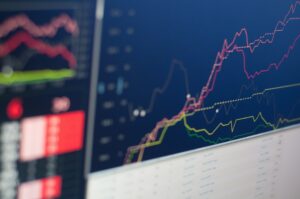Regulating Banks’ Forex Trading: A Look at Current Policies and Future Trends
The world of forex trading has become increasingly complex and interconnected, with trillions of dollars being traded every day. As a result, it is crucial to have effective regulations in place to ensure the stability and integrity of the global financial system. In this article, we will examine the current policies governing banks’ forex trading and explore the future trends that are likely to shape the regulatory landscape.
Forex trading involves the buying and selling of currencies in the foreign exchange market. Banks play a significant role in this market, acting as intermediaries between buyers and sellers. Their large trading volumes and access to global markets make them crucial participants in forex trading.
Due to the potential risks associated with forex trading, regulators have implemented various policies to safeguard the financial system. One of the key regulations is the Basel III framework, which imposes minimum capital requirements on banks. This ensures that banks have sufficient capital to absorb potential losses from forex trading activities. By maintaining adequate capital buffers, banks can mitigate the risks associated with volatile forex markets.
In addition to capital requirements, regulators also impose leverage limits on banks’ forex trading activities. Leverage allows traders to control larger positions with a smaller amount of capital. While leverage can amplify profits, it also increases the potential for losses. Regulators have set limits on leverage to prevent excessive risk-taking by banks. These limits vary across jurisdictions, with some countries imposing stricter regulations than others.
Another critical aspect of regulating banks’ forex trading is the enforcement of fair and transparent practices. Regulators require banks to execute trades at the best available price for their clients and disclose any potential conflicts of interest. This ensures that customers receive fair treatment and are not disadvantaged by the banks’ actions.
Furthermore, regulators have implemented stricter reporting requirements to enhance transparency in forex trading. Banks are required to provide detailed reports on their trading activities, including the volume and value of trades, as well as the counterparties involved. This enables regulators to monitor the market effectively and identify any irregularities or potential risks.
Looking ahead, there are several future trends that are likely to shape the regulatory landscape for banks’ forex trading. One of these trends is the increasing use of technology, such as artificial intelligence and machine learning, in forex trading. These technologies have the potential to streamline trading processes and improve risk management. However, they also pose new challenges for regulators, who must ensure that banks’ use of technology does not result in unintended consequences or unfair advantages.
Another future trend is the growing focus on environmental, social, and governance (ESG) factors in forex trading. Investors and regulators are increasingly demanding greater transparency and accountability from banks regarding their ESG practices. This includes assessing the environmental impact of forex trading activities, as well as considering social and governance factors. Regulators may introduce new guidelines or reporting requirements to address these concerns and promote sustainable forex trading practices.
Additionally, the rise of cryptocurrencies and digital currencies presents a new set of challenges for regulators. While cryptocurrencies offer potential benefits, such as faster and cheaper transactions, they also pose risks, including money laundering and market manipulation. Regulators will need to develop frameworks to address these risks and ensure the integrity of forex trading involving cryptocurrencies.
In conclusion, regulating banks’ forex trading is essential to maintain the stability and integrity of the global financial system. Current policies, such as capital requirements, leverage limits, and transparency measures, aim to mitigate the risks associated with forex trading. However, the evolving landscape of technology, ESG factors, and cryptocurrencies poses new challenges that regulators must address. By staying informed about these trends and adapting their regulatory frameworks accordingly, regulators can ensure that banks’ forex trading remains safe and transparent in the future.





